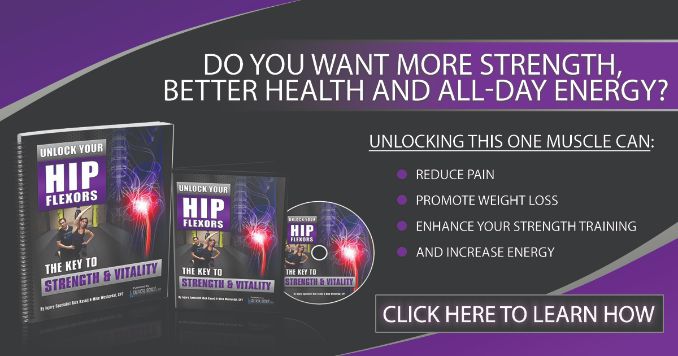A lot of people experience pelvic and hip pain for a variety of different reasons. For some, it is because of an anterior pelvic tilt. This happens when your hips are tilted forward, causing the front part of the pelvis to be pushed out, which can cause pain in your low back and hip joints.
This article will discuss the ways to fix anterior pelvic tilt and tight hip flexors by strengthening your glutes, activating your core muscles, and stretching your hamstrings and hips.
Click the link to watch the video.
https://www.youtube.com/watch?v=wnfHrbNAIoc
Tips to Deal with Anterior Pelvic Tilt in Athletes
I know on a typical day I’ll have them come in, have them roll out, stretch out, and then I’ll take a look to see. You know where they’re sitting pelvis-wise if they’re rotated. Sometimes they’re rotated only on one side over the other side, then we have to do some things to correct that. But that’s pretty much where I ended up doing a muscle energy technique with them or something to that effect if they are. Which is something that I show in the video that I do and teach people how to do the muscle energy technique to themselves. So it’s a self-managing kind of care, which I think if you can put the power into, you know, the person, the old person’s hands, you know, you’re going to get a lot more mileage.
Why Sitting Too Much Is Seriously Bad for Your Health?
A sedentary lifestyle can harm your health by increasing the risk of developing insulin resistance, diabetes, and cardiovascular disease. There are many benefits of living an active life including increased energy levels and weight loss as well as improved moods which will lead to a better quality of life.
A sedentary lifestyle is not healthy for you at all!
Long periods of sitting with several health concerns. They include obesity and a cluster of conditions – increased blood pressure, high blood sugar, excess body fat around the waist, and abnormal cholesterol levels that make up metabolic syndrome. Prolonged periods too much sitting overall seems to increase the risk of death from cardiovascular disease or cancer.
5 Ways to Fix Anterior Pelvic Tilt and Tight Hip Flexors
Anterior pelvic tilt and tight hip flexors are common problems in athletes, dancers, runners, weight lifters. These can lead to pain and chronic injuries such as a runner’s knee or back injury. The following exercises will help you strengthen your hips to prevent these conditions from reoccurring:
1. Encourage yourself not to always sit
Sitting is not all bad as long as you do it correctly. The hip flexors are the muscles that cross both sides of your pelvic floor and support your hips in sitting and standing postures. They get tight if a person spends too much time on their butt with no counterpressure placed below them, which usually happens when people sit for extended periods of time with poor posture or have been sedentary for an extended period before they started to engage in exercise again after a break from physical activity.
2. Stretch out
Hips are complex joint that moves in many directions. Stretching these muscles helps to maintain their flexibility and prevent injuries while working out. This can be done through stretching, using an exercise ball during activity, or by sitting on the floor with your legs spread wide apart for stability purposes before moving into different positions of standing up straight again.
3. Take a break every 30 minutes
Over time, the hip flexor can become tight from constantly taking on tasks that stress your body. It is important to take a break in order for it to recuperate and stop tightening up. When sitting at a desk all day long, you might be tempted to keep moving around throughout the workday. But this will not help loosen up your muscles over time. Instead of standing or walking briskly when doing so becomes difficult as well as if necessary while working on something else (as of typing). Try stretching out one leg completely straight with no weight bearing down onto it before picking back up again afterward.
4. Exercise your muscle
Strengthening your deep hip muscles will be beneficial for both the physical and mental aspects of life. Even if you’re not an athlete, there are plenty of ways to strengthen these important parts of you as well as prevent injuries from coming up in daily routines or sports like basketball or football that challenge your body with intense movements throughout different planes of motion.
5. Foam Roller
The foam roller is a self-massaging device that helps to rid the body of tight muscles and connective tissues for better overall flexibility.
Why Is Stretching Not Enough to Address Back Pain?
To really prevent back pain, you must work on strengthening your lower and upper body muscles. That’s why it is important to stretch the right way. Also, regularly exercising them by stretching each day in order to make them strong enough to support the weight of your upper body while you move about during daily activities.
It is also crucial that when possible you take a break from sitting for long periods of time every few hours by moving around often throughout the day even if this means standing up or stepping away occasionally as well doing other tasks at work too! The more consistency we have with these things over an extended period-we will be rewarded with less risk for back pain!
Here’s a list of interviews that might interest you:
- How to Workout at a High Intensity & Stay Injury-free With Tyler Bramlett
- Common Mistakes When Trying to Improve Hip Flexibility With Eric Wong
- How Food Slows Down Your Injury and Pain Recovery With Anthony DiClementi
For your guide to opening up your hip flexors to eliminate back pain, improve your posture, and boost energy, check out Unlock Your Hip Flexors, here!
